by Ashton Tracy
Deciding whether or not to restore a vintage watch is a tough decision to make. The internet is awash with tales of watches butchered by an incompetent independent watchmaker or, worse still, the brand itself.
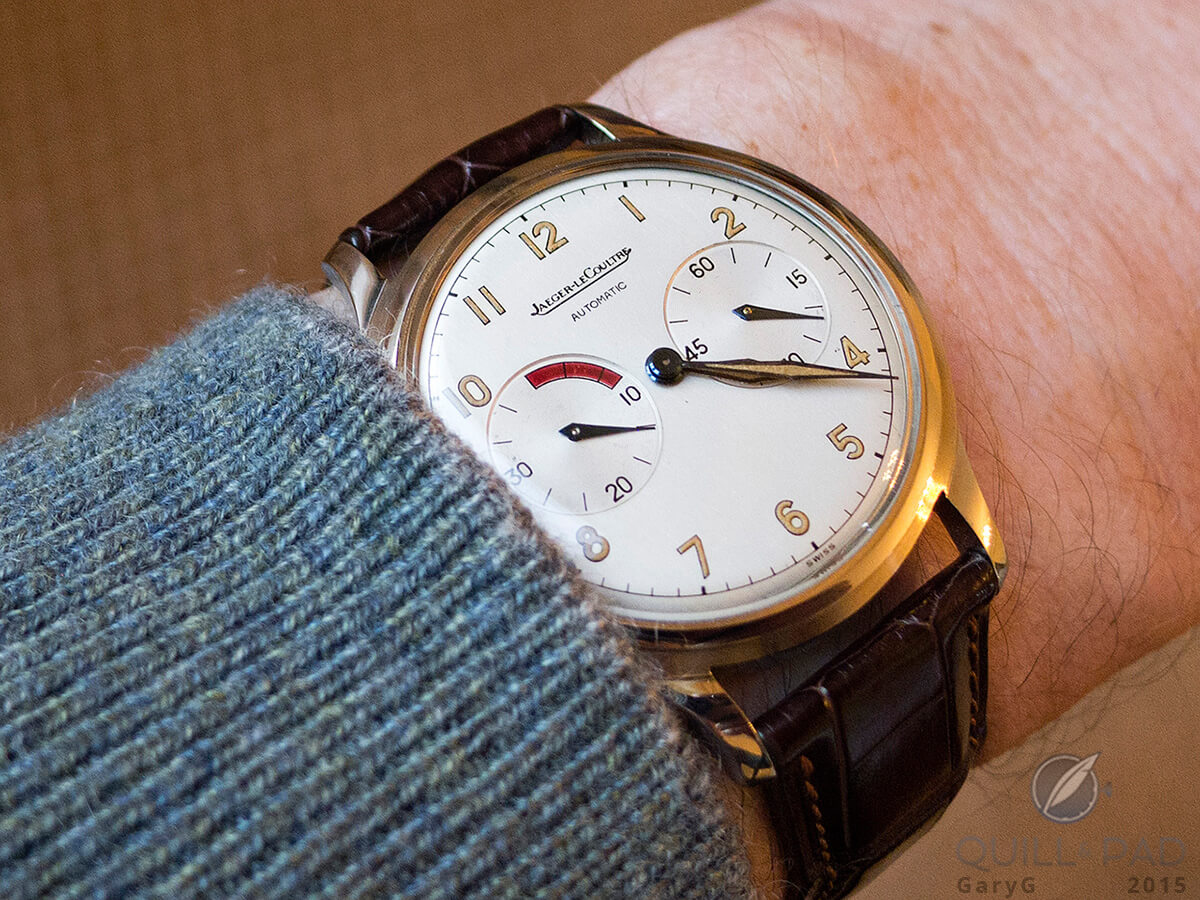
GaryG’s vintage Jaeger-LeCoultre Futurematic
Even more confusing is deciding which options offered should be accepted.
Refinish the case?
Change the hands?
Replace the crystal?
Replace damaged or broken components?
The questions seem endless, however being educated on the subject can remove most of the confusion shrouding the issue at hand.
Refinishing the case
We will get this one out of the way early as it is by far the most controversial: the general consensus in this area is don’t do it as polishing the case of a vintage timepiece is very likely to devalue it.
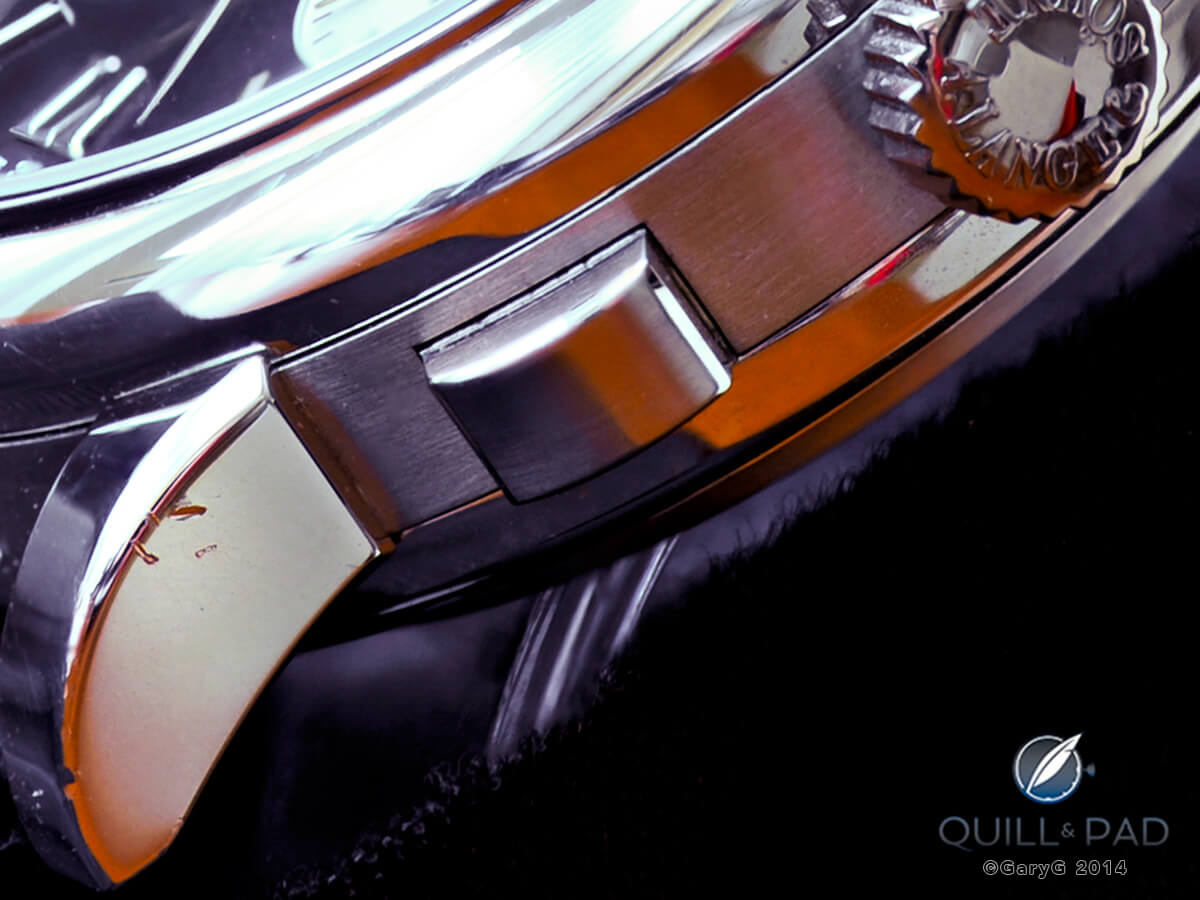
A. Lange & Söhne Double Split before refurbishment
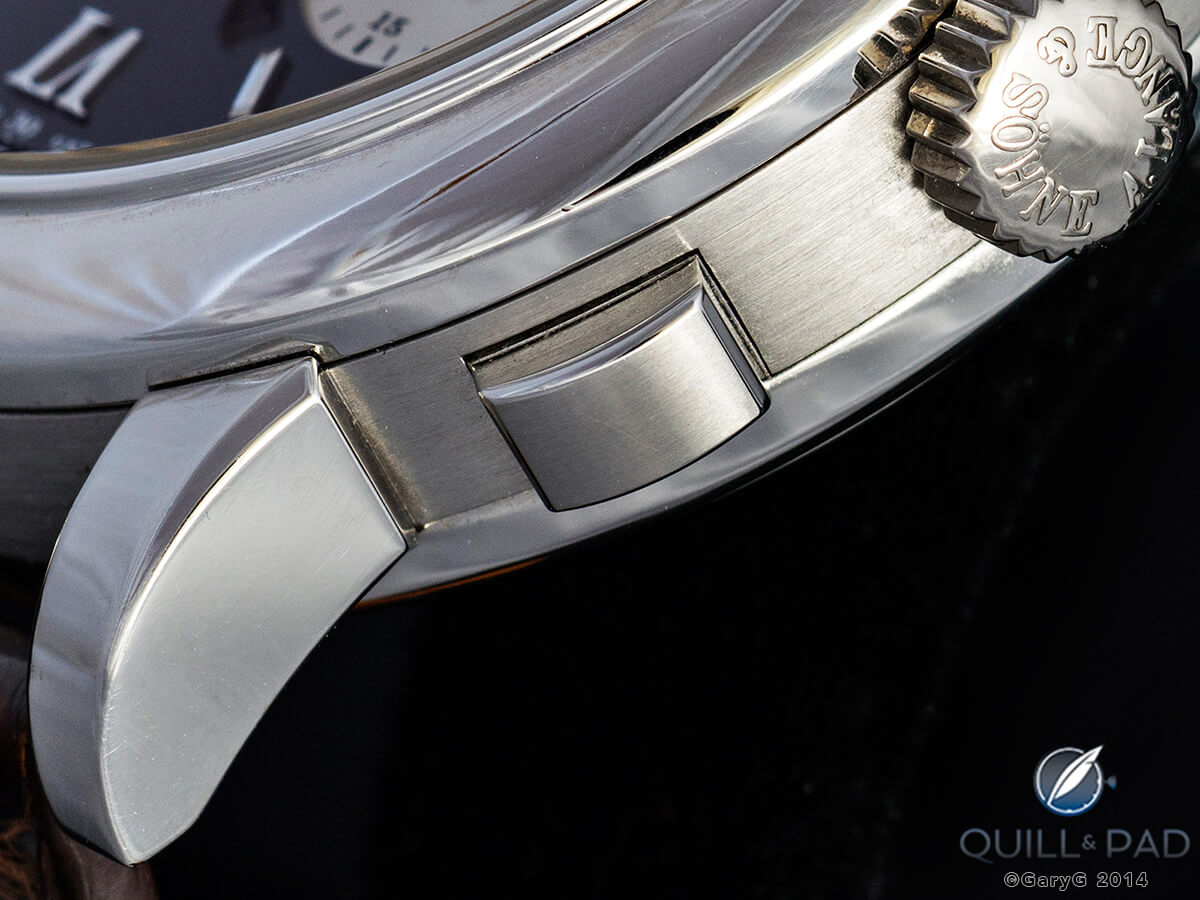
A. Lange & Söhne Double Split after refurbishment
If you own a Paul Newman Rolex Daytona or a Milsub (nickname for a Rolex Submariner issued to British Royal Navy divers in the 1960s and 1970s), this is sound advice.
If you own a 1965 Omega Seamaster, it’s not as crucial as the watch isn’t really worth that much to begin with. So if you want it polished, go ahead.
Many collectors of fine vintage watches prefer them unpolished and original, thus rendering an unpolished example more valuable.
If you own a mid-level watch, say a vintage Rolex Submariner worth $7,000-$10,000, you need to consider the matter carefully. Why do you own the watch? Is it an investment or do you plan to wear the watch? Is it a family heirloom or are you hoping to sell it down the line?
All these questions come into play when considering refinishing.
Doubt? Don’t do it!
If in any doubt, don’t do it! You can always have it refinished later, but you can’t undo what has already been done.
If the decision is to refinish, it’s crucial to understand there are varying degrees of refinishing: some watchmakers are masters of their craft and others are hacks. So if you do decide to go the refinishing route, it is imperative you choose someone who knows what they are doing and has the correct machinery and equipment.
An expert watchmaker isn’t necessarily a master of refinishing, so look for an expert in the field.
The crystal
Some claim original crystals should be left as is, arguing the replacement can devalue the timepiece.
If a crystal is original and in working order, keeping the original will do no harm. However, the crystal is the first line of defense against the elements and if damaged should be replaced.
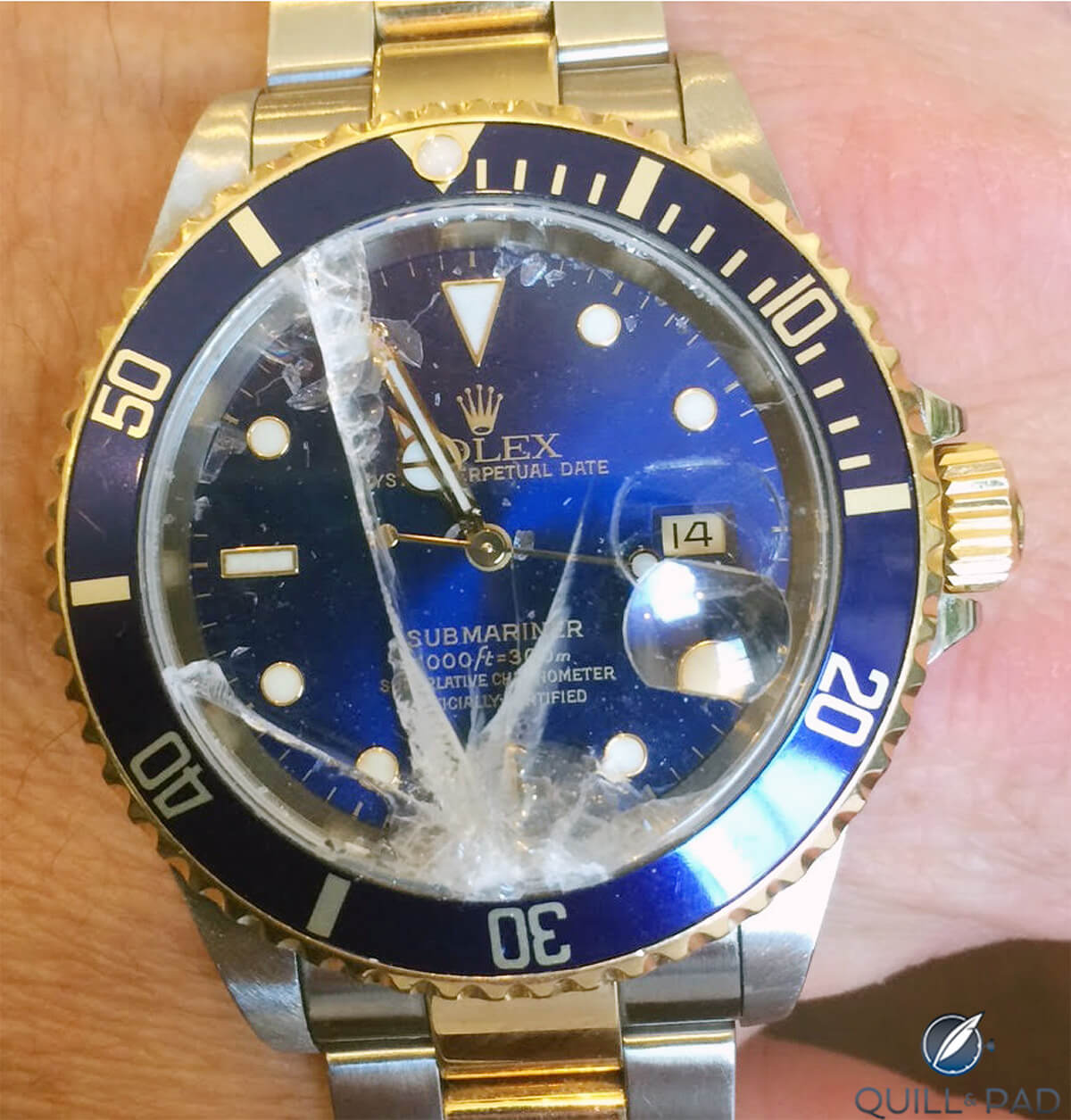
Ouchhh! This Rolex Submariner has seen better times
Replacing a damaged crystal with a correct, original crystal is good practice as it ensures the dial, hands, and movement are protected. Leaving a cracked or damaged crystal can allow moisture or dirt to enter, causing irreparable damage in some cases.
If that is allowed to happen, the value of the watch will certainly decline. Original crystals produced by the manufacturer must always be insisted upon to ensure the watch’s integrity and longevity as ill-fitting aftermarket components can cause compromise.
Water resistant gaskets
Similar to the crystal, gaskets are a crucial line of defense against the outside world.
Gaskets must always be changed when restoring a vintage watch as over time they can become brittle, crack, flatten, and – in some cases – turn to goo. Whether a gasket is compromised or not, replacement is always recommended.
Certain manufacturers employed lead gaskets in past times; if your watch is still fitted with such a gasket, changing for a new rubber gasket would be prudent to ensure the watch keeps the elements out.
Hands and dial: no compromise
Similar to refinishing, the value of the watch must be considered; however, deciding whether to keep original dials and hands is almost always an area of no compromise: original is best.
Original, age-appropriate dials and hands are where the money is as collectors always demand original patina.
Far too often we come across beautiful vintage pieces that have glaringly bright luminous markers radiating as if they were manufactured last week. And on occasion the dial is kept original with only the hands having been exchanged. This looks even worse!
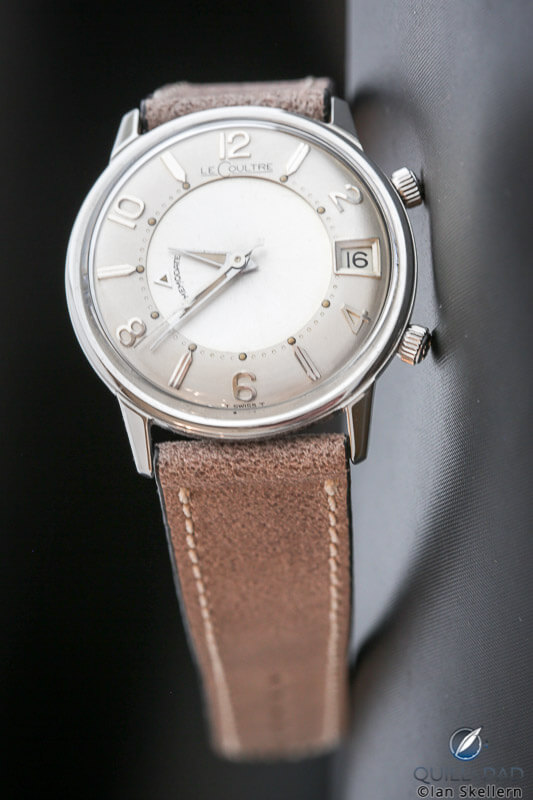
This vintage LeCoultre Memodate has had some very light work done to the hands to prevent further cracking of the tritium, preserving the integrity of the dial
Exchanging dial and hands doesn’t just drastically devalue the watch, it looks plain terrible and often times the dial and hands won’t be the original style – imagine a matte dial being exchanged for a glossy one.
If luminous paint is starting to crumble from the hands, exchanging them is not the only option. It would be more prudent to use a clear lacquer or nail polish to place a thin coating underneath the hands to ensure the integrity of the old luminous paint, ensuring the hands won’t deteriorate any further. Any competent, experienced watchmaker should be able to discuss that with you.
Movement parts
Worn movement parts must always be replaced to ensure your watch performs as intended.
Changing out for original, factory produced parts or having components manufactured by hand if these are no longer available has no bearing on the value of the watch. If worn components are left to decay then further damage is likely.
If one were to leave a cut axle, for example, it would cause the watch to not function as intended and possibly deteriorate faster, causing damage to other components and seriously impacting the value and function if those parts cannot be purchased or replicated.
Bezel, crown, and pushers
The bezel is an area of a vintage watch that can have a considerable impact on value. Collectors do prefer original, especially some GMT, dive, or tachymeter bezels.
Similar to dial and hands, I would suggest maintaining the original as far as possible as certain vintage watches can be seen as worthless in the eyes of collectors if not accompanied by original bezels.
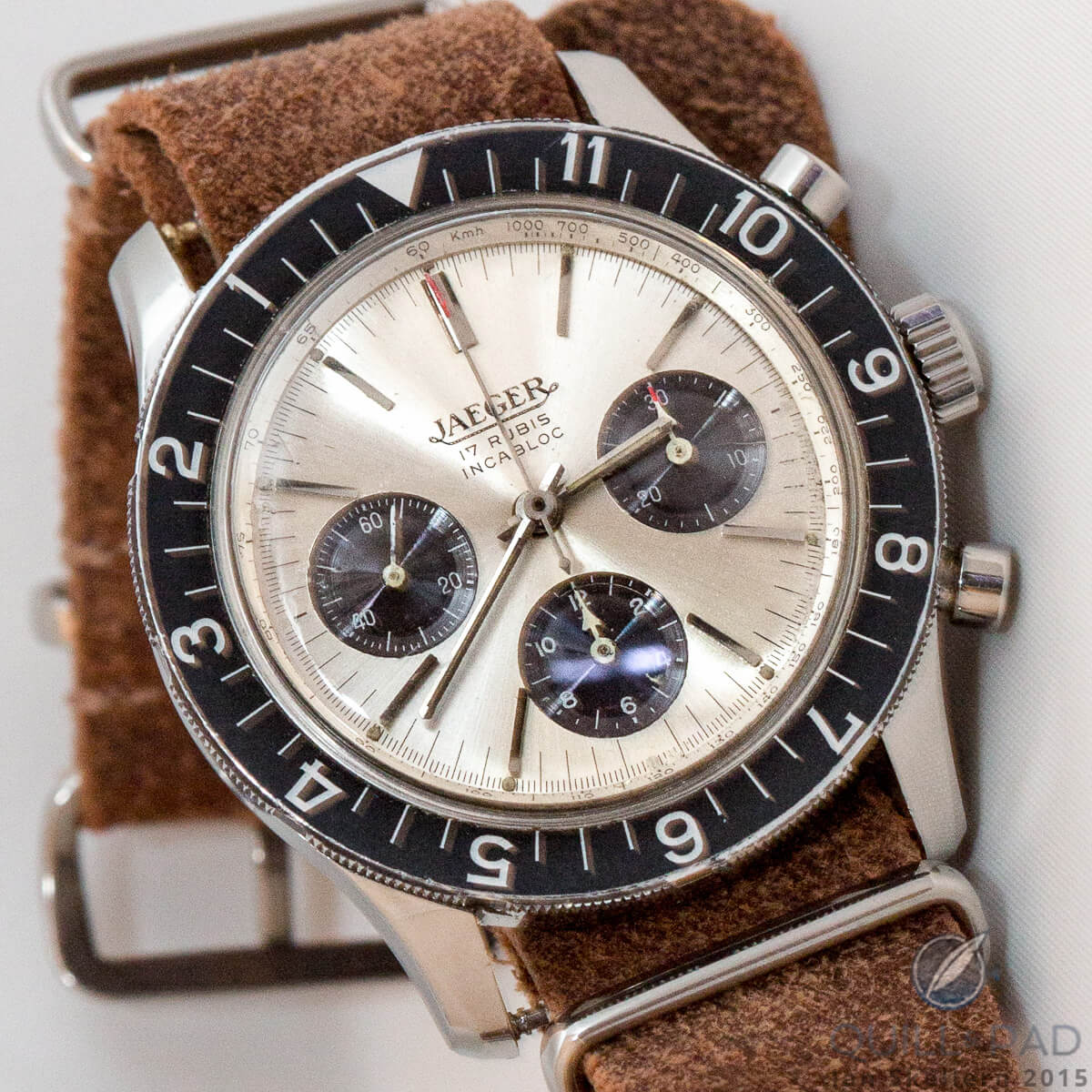
A vintage Jaeger “Panda dial 4 ATM” with intact bezel
The crown and chronograph pushers are another area in which the collector prefers original, but badly damaged parts need to be looked at carefully. Similar to the crystal, these components ensure the integrity of the watch so if the decision is to keep the original, endeavoring to change the gaskets in these items would be wise, ensuring the watch stays as sealed as possible.
If the original parts are exchanged for modern examples, ensuring that the old parts are given back to you is prudent.
The most crucial component: the watchmaker
The final area may be the most crucial: choosing a competent, experienced watchmaker.
Whether the decision is to use the manufacturer or an independent repairer, find out ahead of time whether they understand the process of restoration. Always make sure to ask questions so you can understand their stances on restoration and ensure they are happy to follow your wishes.
Don’t allow anyone to pressure you into changing something just because they say it needs it. Find out why they want it changed and make your own informed decision.
There are some areas that won’t be up for debate as most independent watchmakers and manufacturers will not perform partial repairs, especially on a vintage watch. This ensures the watch will be working as intended and isn’t a point that should be argued – with the same being true for damaged crystals, gaskets, and movement parts.
Refinishing of the case and bracelet or exchanging dial and hands, bezel, crystal, or pushers should however always be the customer’s choice.
Ultimately, the decision is yours
All of the above decisions are ultimately yours to make, and if you decide you want everything exchanged for brand-new versions, then go ahead.
The crucial thing is to ensure you understand exactly what you are doing and if you are fully aware that replacing certain parts will dramatically reduce the value of your watch in some cases.
If you do, there is no issue: exchange away.
Far too often, however, we see people making uninformed decisions about vintage watches and seriously regretting it later down the line.
Having a vintage watch restored can be stressful and confusing, but it doesn’t have to be as long as you keep the above factors in mind to understand the process.
* This article was first published on May 1, 2018 at Vintage Watch Restoration: Should You Or Not? A Guide To The Oft-Controversial World Of Making Things Worse By Trying To Make Them Better.
You may also enjoy:
A Contemporary Watch Collector Goes Vintage
Cartier Ceinture: Largely Ignored, Often Overlooked, And Usually Underestimated





















































Leave a Reply
Want to join the discussion?Feel free to contribute!